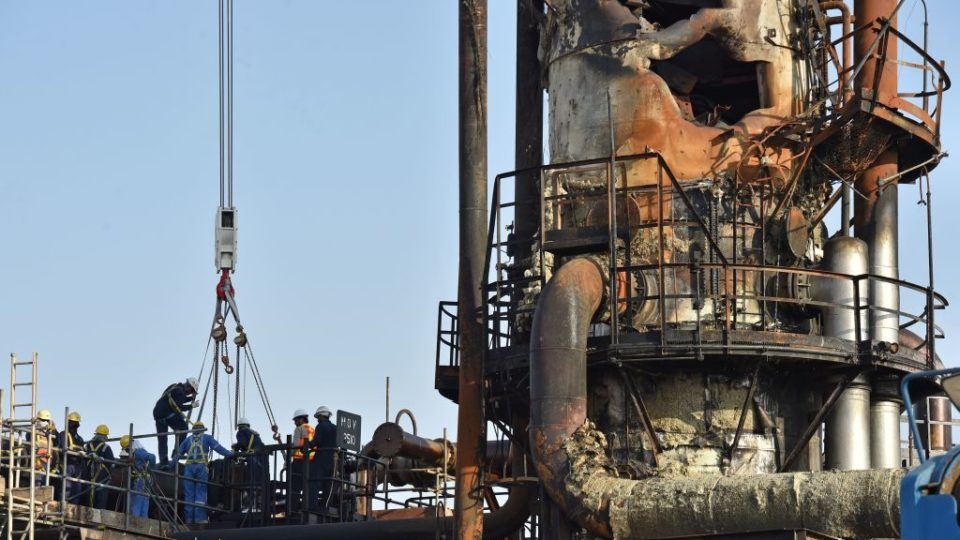Saudi Arabia has shown the world its damage to its oil facilities from attacks that Washington and Riyadh blame on Iran.
The tour of its melted pipes and burnt equipment came as Tehran vowed wide retaliation if heightened tensions boil over into hostilities.
The kingdom sees the September 14 strikes on its Khurais and Abqaiq facilities – the worst attack on Gulf oil infrastructure since Iraq’s Saddam Hussein torched Kuwaiti oilfields in 1991 – as a test of global will to preserve international order.
President Donald Trump said on Friday the United States was imposing sanctions on Iran’s central bank over the attack. US Treasury Secretary Steven Mnuchin said the bank was Tehran’s last source of funds.
Asked about the possibility of a military response on Iran, Mr Trump said the US was always prepared and that a military strike was always a possibility.
Iran denies involvement in the attack, which initially halved oil output from Saudi Arabia, the world’s largest petroleum exporter. Responsibility was claimed by Yemen’s Houthi movement, an Iran-aligned group fighting a Saudi-led alliance in Yemen’s four-year-old conflict.
At Abqaiq, one of the world’s largest oil processing plants, reporters saw a punctured, blackened stabiliser tower that Khalid Buraik, Saudi Aramco vice-president for southern area oil operations, said would have to be replaced.
Read the article in The New Daily (AAP).

